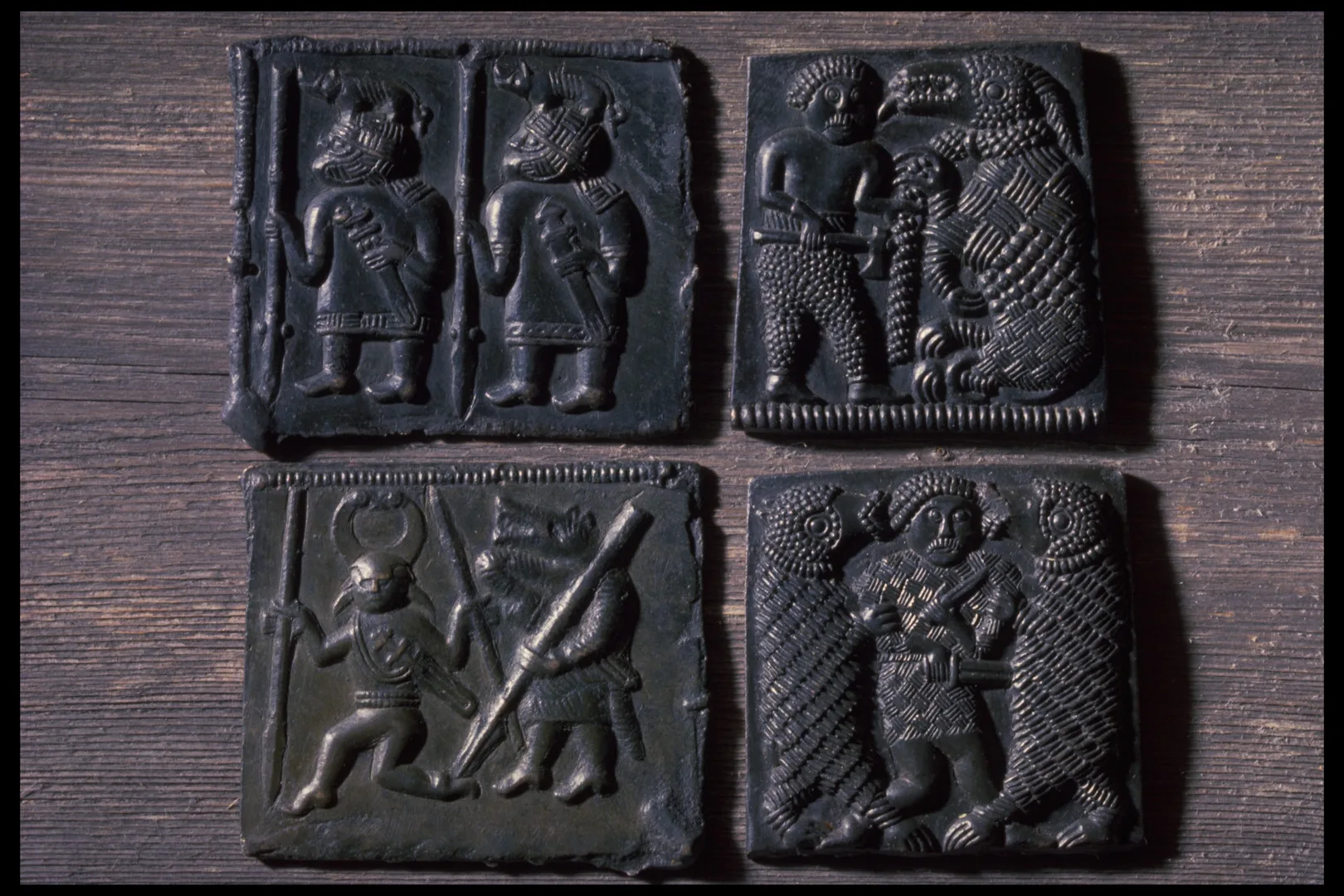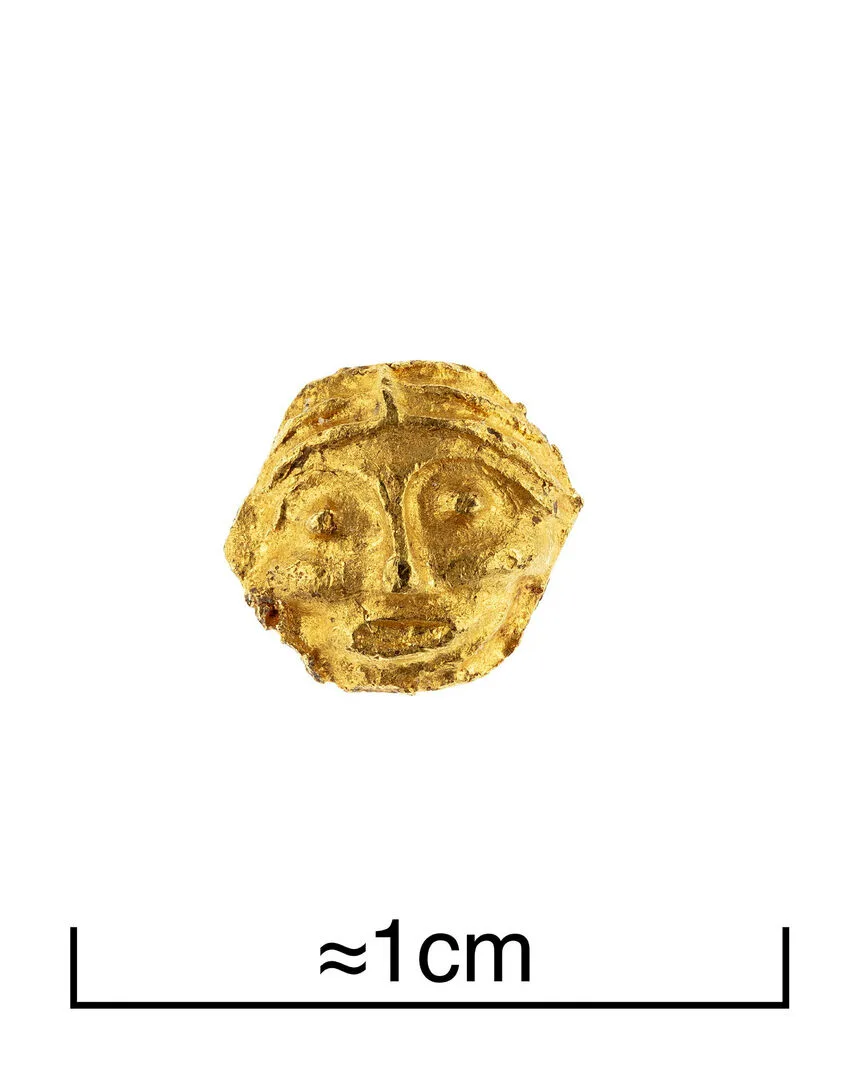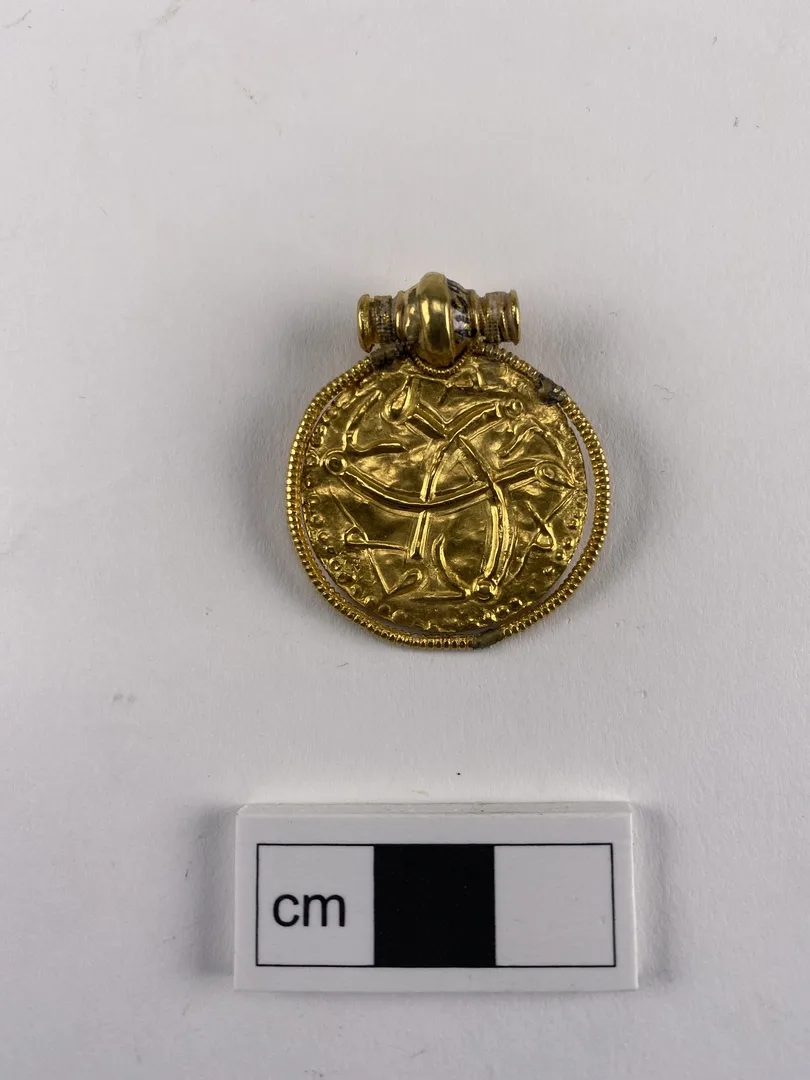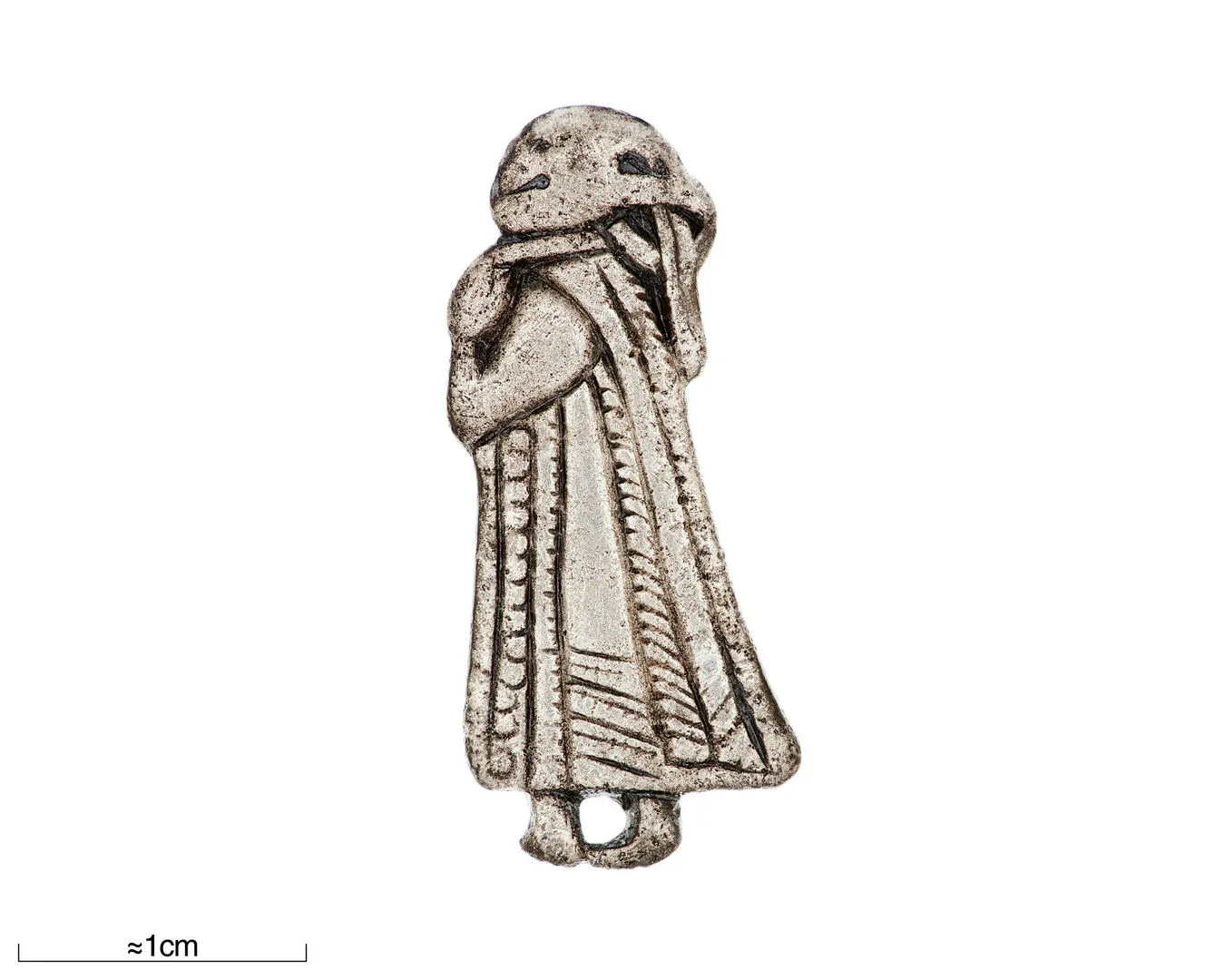Hair and Hairstyles in the Iron Age
Perhaps hair and hairstyle were used to signal different things, such as social status. Fashion in hair changed even then, and in hairstyles we can probably trace influences from regions far beyond the local. In a Viking Age written source, the Arab diplomat Ibn Fadlan, we find support for the importance of hair. He encounters a group of Norsemen in Russia and remarks that they are vain and comb their hair every day.

Iron Image Plates
On view at Historiska museet in the exhibition Guldrummet
The Iron Age’s Favourite Hairstyle?
One intriguing group of human representations consists of small bronze plaques showing faces in frontal view. Four such pieces have been found on Öland, and a fifth probably on Öland or in Småland. They can be dated to the first centuries AD, or somewhat earlier. On them we are met by the favourite hairstyle of the Early Iron Age: a clearly marked centre parting with the hair combed to either side. Even though it is a pronounced simplification, the hairstyles seem to have been inspired by Roman models.
Looking at roughly contemporary Roman portraits, certain similarities can be found. Roman influence can also be seen in some women’s graves from this period, where finds interpreted as hairpins have been made. Roman women wore elaborate hairstyles, and it is likely that people in Scandinavia allowed themselves to be influenced by this fashion for a time.

Pin Head with Face
A Ponytail with Power
Somewhat later, in the 5th and 6th centuries AD, the “centre-parting hairstyle” remained in use. For instance, it can be seen in the details of the Ålleberg gold collar. But we also encounter an entirely new fashion in hair. This is displayed on a series of round gold pendants known as bracteates. Here a longer style dominates, gathered at the nape in something resembling a ponytail.

Bracteate
On view at Historiska museet in the exhibition Guldrummet
On a bracteate from Trollhättan a variation of this can be seen. It is an image of the god Tyr, who, rather like an ancient Pippi Longstocking, sports sturdy “pigtails”. It even looks as if bells or similar ornaments have been tied into the hair, with the ends finished off in a kind of plait.
Long hair may at this time have been associated with strength or with particular qualities. It is perhaps no coincidence that it was around this time the Frankish royal dynasty was referred to as the “long-haired Merovingians”, and that it was a god, Tyr, who was depicted with long hair.
From the 7th century onwards we find the first clear women’s hairstyles. These appear on small and delicate gold foils known as guldgubbar. A recurring motif on these is a couple, a man and a woman, embracing.
The man often has long, swept-back hair, while the woman wears an elaborate bun at the nape and hair that falls far down her back. A similar hairstyle also appears on small pendants in the form of a woman from the Viking Age. These have been interpreted as representations of Valkyries.

Pendant
Pendant depicting a woman, found in grave 825 Birka.
On view at Historiska museet in the exhibition Guldrummet
Combs for Hair and Beard
Other traces in the archaeological material also point to the importance of hair in the Iron Age. In graves, combs made of bone or horn are often found. Their design varies somewhat depending on the period they come from. The oldest are carved in one piece, while the later ones consist of several parts riveted together with bronze or iron.

Comb
Comb of bone. Found at Birka, Uppland.
It almost seems as though everyone had their own comb, which they were also buried with. Perhaps this was because the comb was so “personal” it could not be used by anyone else. Or perhaps the deceased had been combed with it as part of the funeral ritual, and so the comb had to accompany them in the grave.



